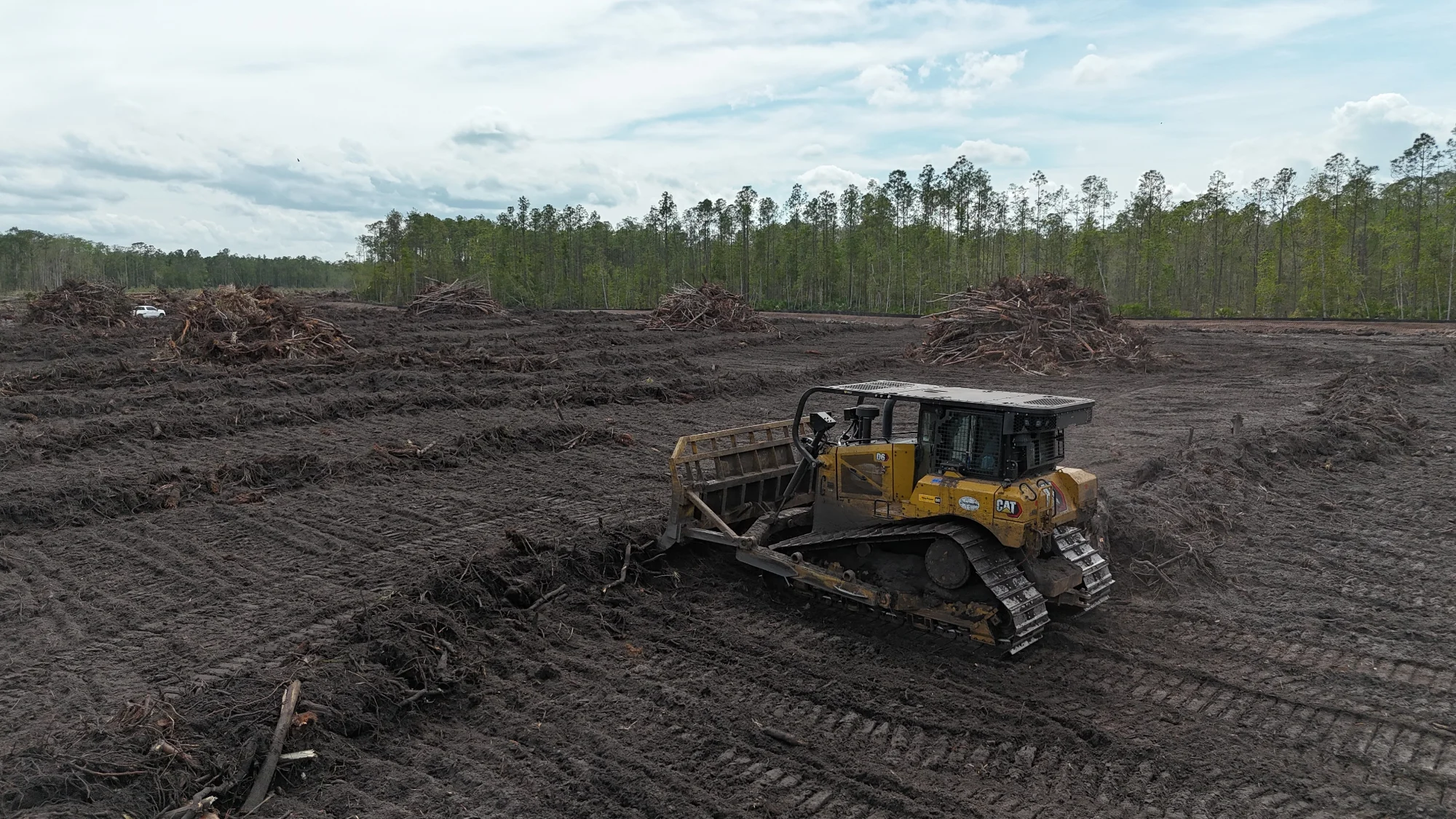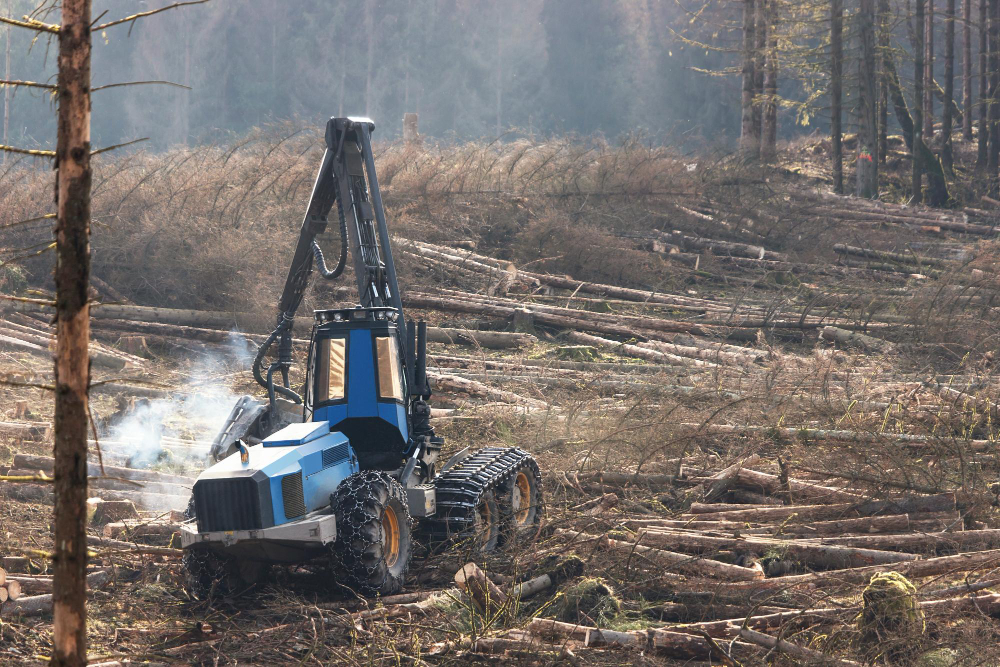

Planning a land clearing project requires careful consideration of numerous factors, but one element often catches property owners off guard: weather. While Florida's year-round warmth makes it seem like construction and land development can happen anytime, the reality is more complex. Weather patterns significantly impact every aspect of land clearing, from equipment operation to project timelines and costs.
Understanding these weather-related challenges helps property owners make informed decisions about when to schedule their projects and what to expect throughout the process. Whether you're preparing land for residential development, agricultural use, or commercial construction, timing your project around weather conditions can mean the difference between a smooth operation and costly delays.
Spring brings some of the most favorable conditions for land clearing in Oviedo, FL. Temperatures remain comfortable for equipment operators and crews, typically ranging from the mid-60s to low 80s. However, spring also marks the beginning of increased rainfall activity.
March through May sees moderate precipitation that can soften soil conditions. While this isn't necessarily problematic, it requires careful monitoring of ground conditions to prevent equipment from getting stuck or causing excessive rutting. The moderate temperatures during this season allow for extended working hours without the extreme heat stress that comes later in the year.
Summer presents the most challenging conditions for land clearing operations. High temperatures often exceed 90°F, combined with humidity levels that make it feel even hotter. These conditions force contractors to start work earlier in the morning and take more frequent breaks to protect crew safety.
The summer months also bring afternoon thunderstorms that can halt operations quickly. These storms often develop rapidly, requiring crews to secure equipment and seek shelter. While individual storms may be brief, they can disrupt daily schedules and create muddy conditions that persist for hours or even days.
Many contractors consider fall the optimal season for land clearing projects. Temperatures cool to more comfortable levels, typically in the 70s and 80s. Rainfall decreases significantly compared to summer months, and the threat of severe weather diminishes.
The combination of moderate temperatures, lower humidity, and reduced precipitation allows for longer working days and more consistent progress. Equipment operates more efficiently in cooler temperatures, and crews can maintain higher productivity levels throughout the day.
Winter in Oviedo brings the most predictable weather conditions for land clearing. While temperatures can occasionally drop into the 40s or even 30s during cold fronts, most winter days feature mild temperatures in the 60s and 70s with low humidity.
The main challenge during winter months isn't cold weather but rather the occasional freeze that can affect certain types of vegetation removal and disposal methods. However, these conditions are generally short-lived and don't significantly impact most projects.
Heavy rainfall creates one of the most significant challenges in land clearing: saturated soil conditions. When soil becomes waterlogged, heavy equipment can sink, get stuck, or create deep ruts that damage the land and require costly repairs.
Saturated conditions also make it difficult to achieve proper grading and drainage during the clearing process. Contractors may need to wait several days after heavy rain before resuming operations, especially when working with clay-heavy soils common in parts of Central Florida.
Wet conditions complicate debris removal and disposal. Wet wood and vegetation are heavier, making transport more expensive and time-consuming. Burning operations, where permitted, become impossible during wet conditions and may remain prohibited for days after rainfall stops.
Chipping operations can continue during light rain but become less efficient as wet material doesn't process as cleanly. This can lead to longer processing times and potential equipment maintenance issues.
Rainfall during active land clearing projects increases erosion risks. Exposed soil without vegetation cover becomes vulnerable to washing away, potentially creating environmental compliance issues and requiring additional stabilization measures.
Contractors must implement temporary erosion control measures more aggressively during rainy periods, which can add time and cost to projects. These measures become especially critical on sloped terrain or near water bodies.
High temperatures common in Florida summers affect equipment performance and longevity. Engines work harder in extreme heat, requiring more frequent cooling breaks and potentially leading to overheating issues. Hydraulic systems in excavators and other heavy machinery become less efficient as temperatures rise.
Extreme heat also increases the risk of equipment breakdowns, which can cause significant project delays. Contractors often adjust working hours during summer months, starting earlier in the morning and taking longer midday breaks to protect both equipment and crew safety.
Temperature extremes directly affect worker productivity and safety. During hot summer days, crews must take more frequent breaks, stay hydrated, and monitor for heat-related illnesses. These necessary precautions slow progress but are essential for maintaining safe working conditions.
Conversely, the occasional cold snaps in winter can also impact productivity, though to a lesser degree. Cold temperatures can make equipment harder to start and may require additional warm-up time for hydraulic systems to reach optimal operating efficiency.
Understanding weather patterns allows property owners to plan their land clearing projects during optimal windows. Fall generally offers the best conditions, followed by winter and spring. Summer projects require more careful planning and may take longer due to weather-related delays.
For large projects, starting in late fall or early winter allows crews to make significant progress during favorable conditions while building in buffer time for potential weather delays during less predictable seasons.
Smart project planning includes weather contingencies in both timeline and budget. Experienced contractors factor in potential rain delays, especially for projects scheduled during Florida's wet season from May through October.
Property owners should discuss weather contingency plans with their contractors upfront, including policies for weather delays, equipment protection during storms, and procedures for resuming work after adverse conditions.
Experienced land clearing contractors understand how to work with Florida's variable weather conditions. They monitor weather forecasts closely, adjust schedules proactively, and have strategies for managing weather-related challenges.
Professional contractors also carry appropriate insurance and have protocols for protecting equipment and work sites during severe weather events. This experience proves invaluable in keeping projects on track despite weather challenges.
Weather will always be a factor in land clearing projects, but understanding its impacts helps you plan more effectively and set realistic expectations. The key is working with experienced professionals who know how to navigate Florida's unique climate challenges while maintaining project quality and timeline goals.
If you need professional land clearing in Oviedo, FL, contact Drinkwater & Drinkwater today to get a quote. Our experienced team understands local weather patterns and will work with you to plan your project for optimal conditions and results.